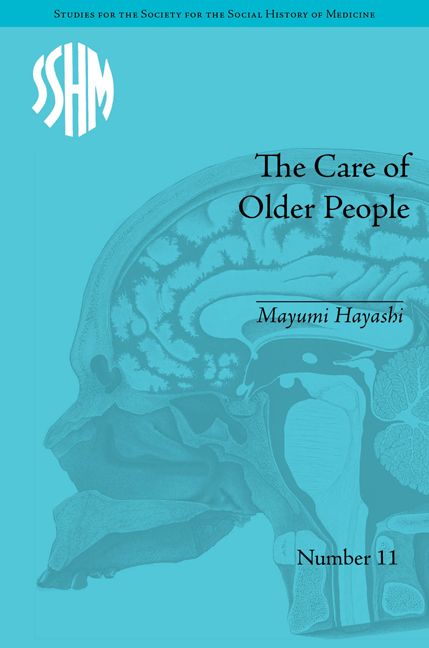2 - The Japanese Context
Summary
This chapter reviews the development of Japan's residential care for older people, focusing on statutory residential provision under the 1929 Poor Law and post-war welfare arrangements. Alternatives and complementary care and the legacy and stigma associated with obasuteyama (granny-dump mountain) are also discussed.
Obasuteyama
In Japan institutional care can be traced to the late sixth century, when the aged, destitute and frail, without a family to care for them, were placed in poorhouses along with the sick, disabled, vagrants and orphans. These were charitable facilities provided by the emperor, monks and philanthropists, inspired by Buddhism or Confucianism. There were, however, very few, and specialized institutions did not appear until the 1870s. The first charitable small almshouse exclusively for older people opened in 1895, but there was no official involvement in indoor (institutional) relief before the 1929 Poor Law.
As a result, the institutionalization of older people in Japan is less associated with Poor Law institutions than with obasuteyama, by which eldest sons left aged parents who had outlived their usefulness to die of starvation and exposure. While this suggests a lack of filial respect and family neglect, for older people ‘obasuteyama is a symbolic metaphor representing the pathos and unfulfilled expectations of their later years ‖ a harsh reality encapsulated and objectified by its transformation into a symbol of suffering and sacrifice’. Elderly ‘residents refer to the story to express their sense of shame, isolation, and abandonment … they have been denied their rightful place among [the] family but … others view them as objects of pity or scorn’. Japanese literature and folklore have fostered the image in the public imagination, and it was confirmed by Shichiro Fukazawa's 1957 novel Ballad of Oak Mountain.
- Type
- Chapter
- Information
- The Care of Older PeopleEngland and Japan - A Comparative Study, pp. 39 - 68Publisher: Pickering & ChattoFirst published in: 2014



